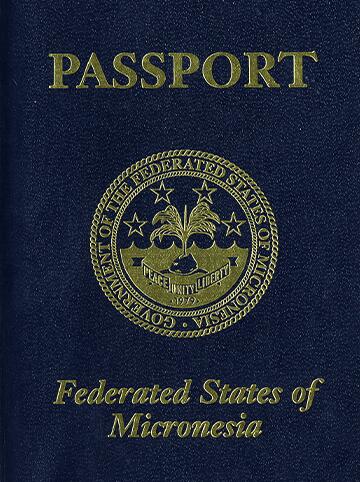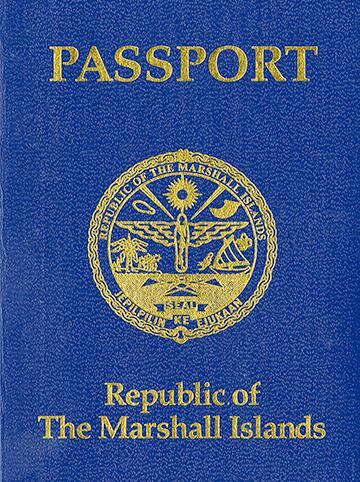13.1 List A Documents That Establish Identity and Employment Authorization
The illustrations do not reflect the actual size of the documents.
U.S. Passport
The U.S. Department of State issues the U.S. passport to U.S. citizens and noncitizen nationals. A small number of versions still in circulation may differ from the main versions shown here.
Current U.S. passport cover and interior
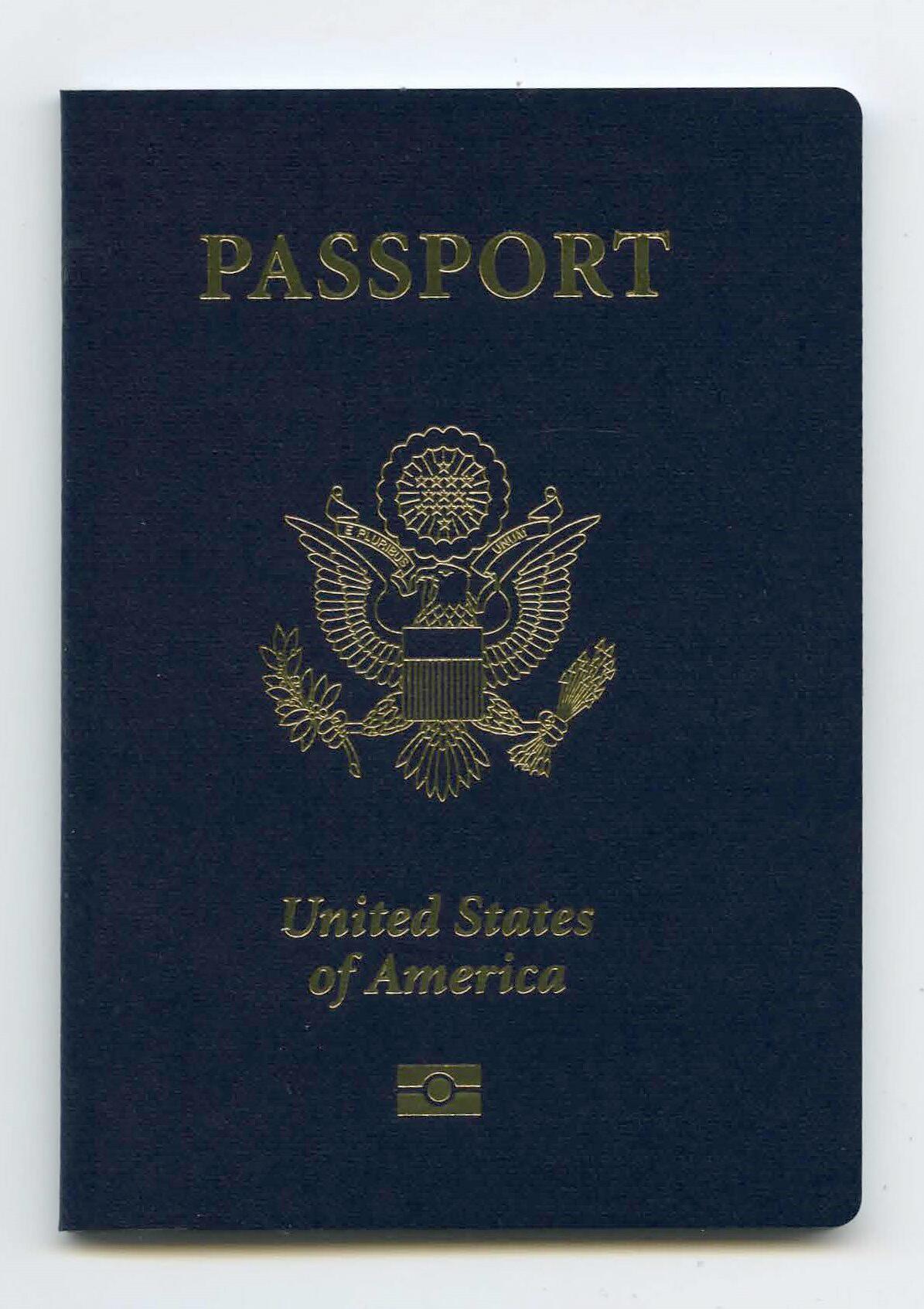
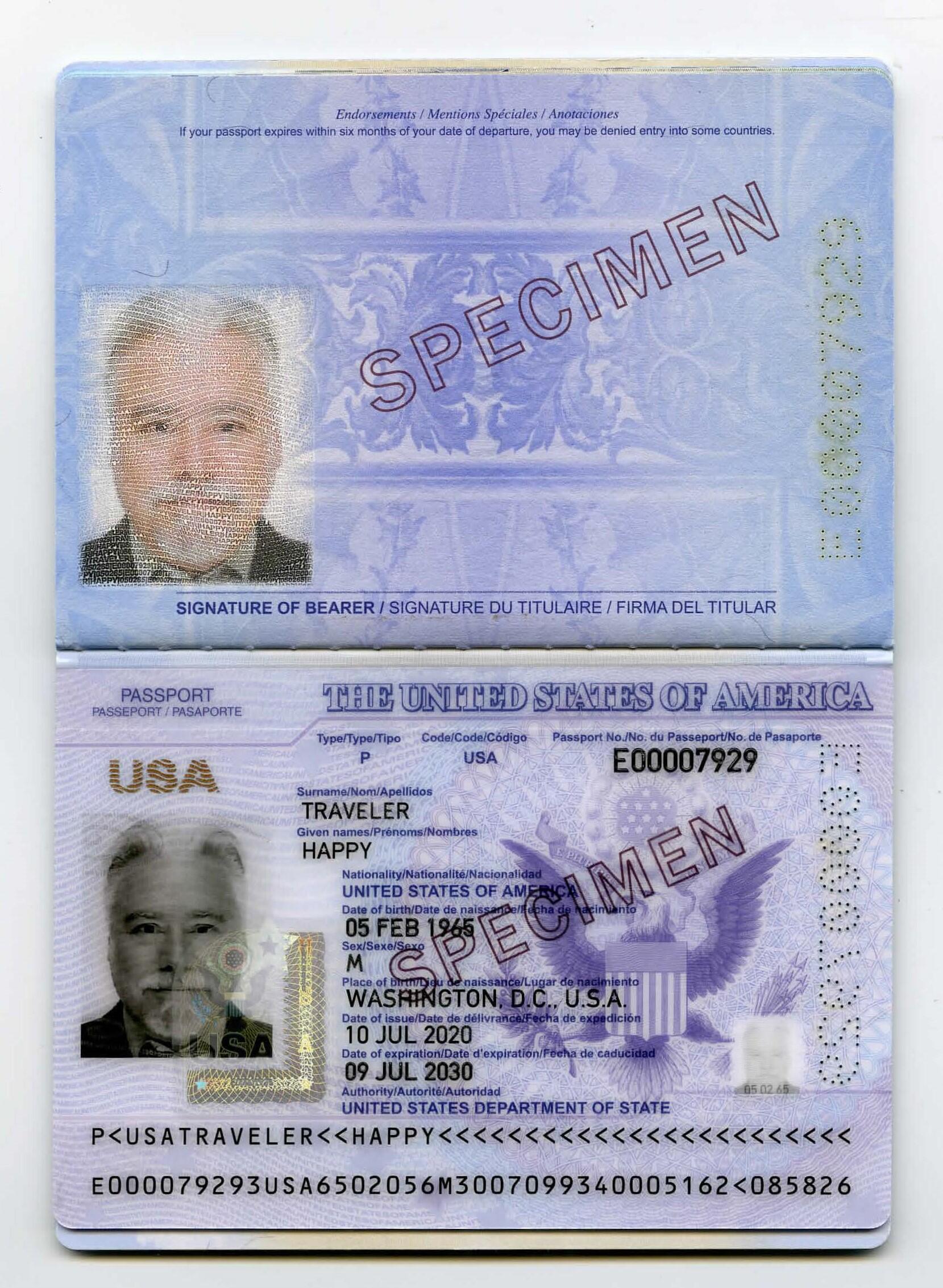
U.S. Passport Card
The U.S. Department of State began issuing the passport card in July 2008. The passport card is a wallet-size card that can only be used for land and sea travel between the United States and Canada, Mexico, the Caribbean, and Bermuda.
Passport card front and back
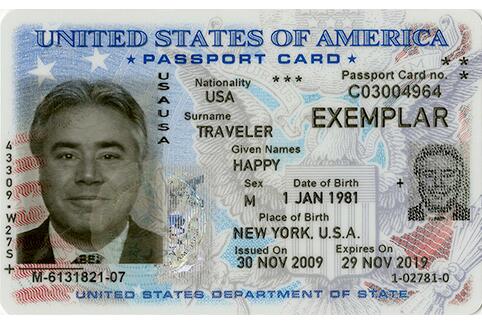
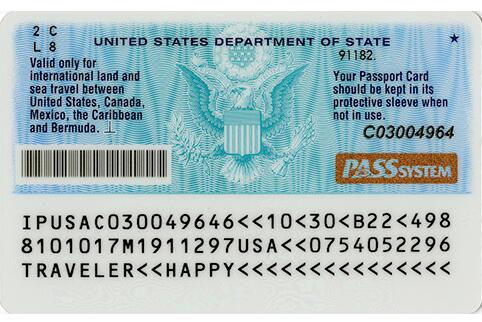
Form I-551, Permanent Resident Card (Green Card)
To reduce the risk of fraud and counterfeiting, USCIS redesigns the Permanent Resident Card (PRC) every three to five years. Introduction of new card designs does not mean that cards with previous designs are invalid. Both current and previous cards remain valid until the expiration date shown on the card (unless otherwise noted, such as through an automatic extension of the validity period of a PRC as indicated on a Form I-797, Notice of Action, or in a Federal Register notice). These cards are also known as “Green Cards.”
Current Form I-551, front and back
USCIS began issuing this version of the Permanent Resident Card on January 30, 2023. Some cards issued after that date may still display the previous design because USCIS uses existing card stock until supplies are depleted. This version contains the bearer’s photo on the front and back, name, USCIS number/A-Number, date of birth, and card expiration date, along with updated artwork of the Statue of Liberty, holographic images on the front and back of the card, a new layer-reveal feature with a partial window on the back photo box, and data fields displayed in different places than on previous versions.
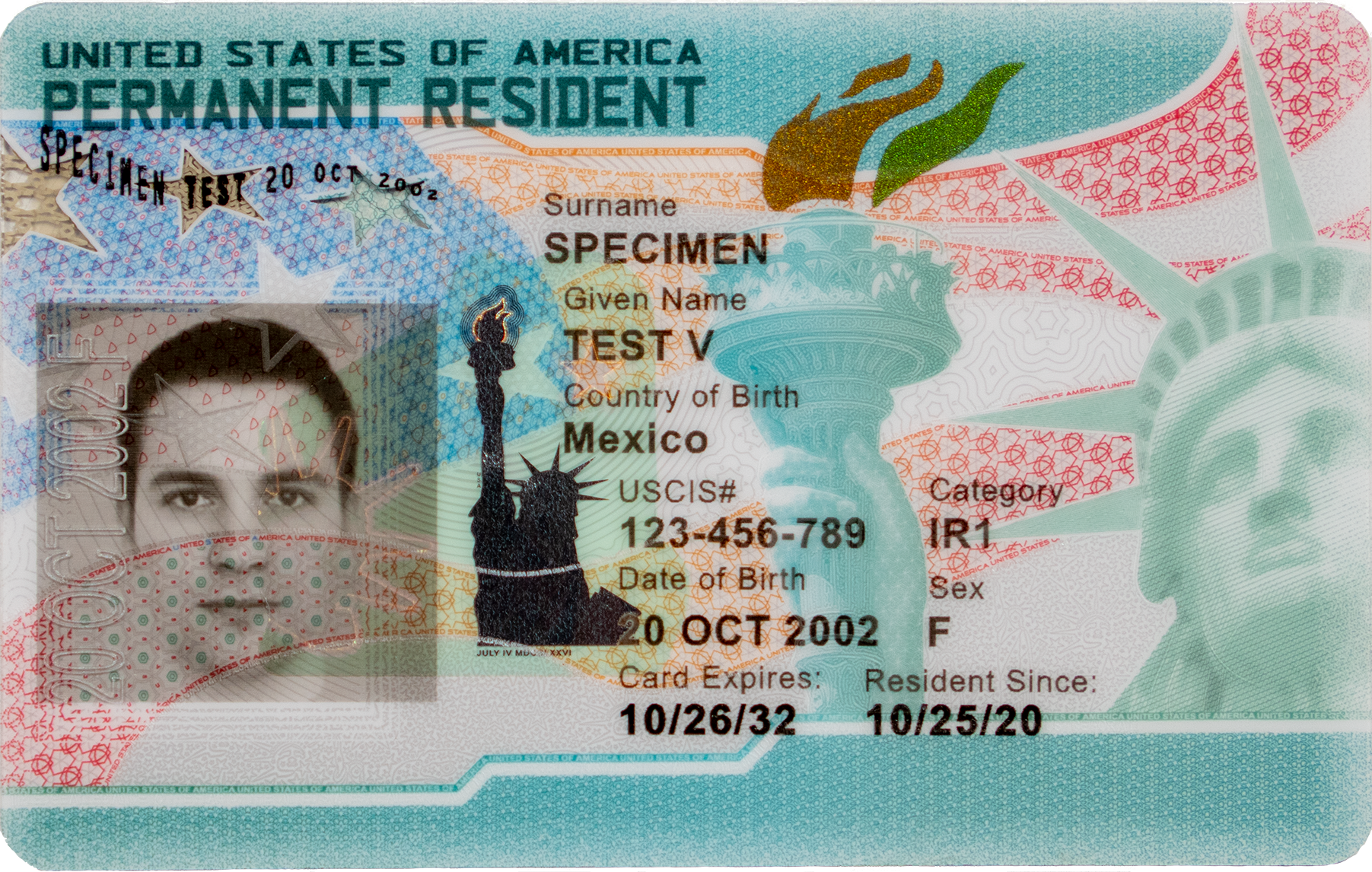
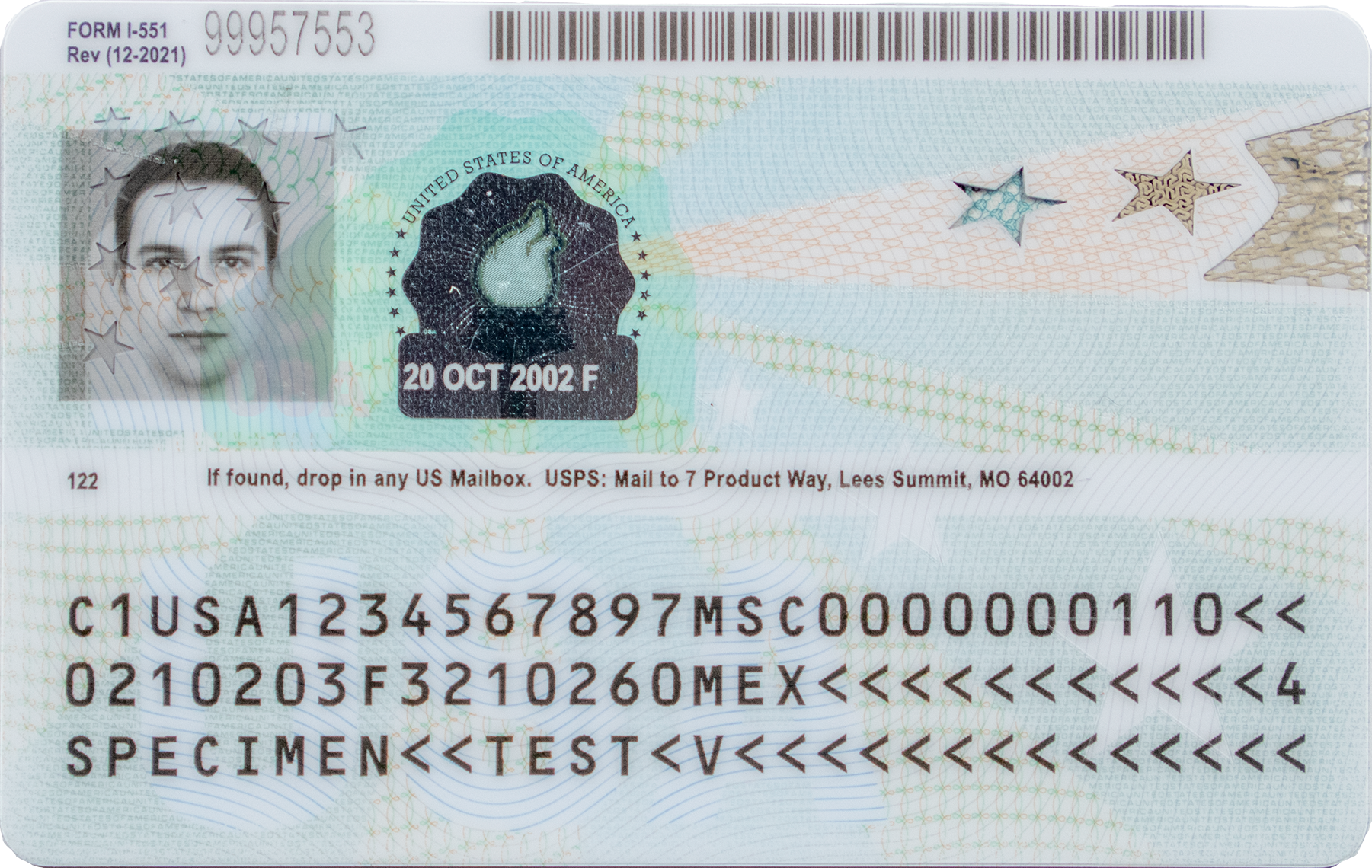
Previous Form I-551, front and back
Starting on May 1, 2017, USCIS issued this version of Form I-551, which contains the bearer’s photo on the front and back, name, USCIS number/A-Number, date of birth, laser-engraved fingerprint, and card expiration date. This card does not have a signature or a black stripe on the back.
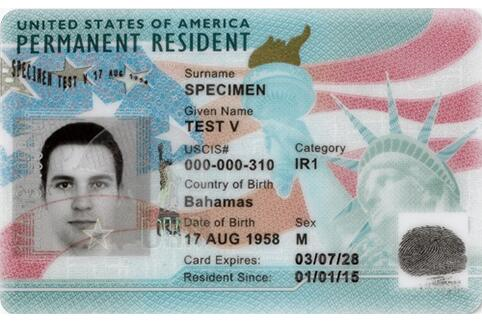
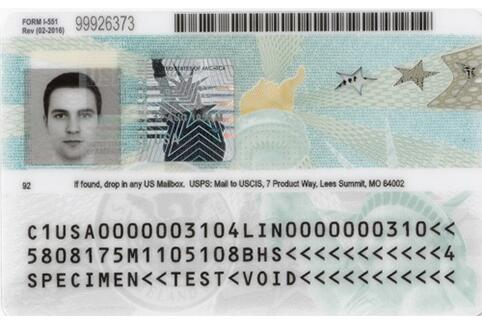
Older Form I-551, front and back
USCIS began issuing this version of Form I-551 in May 2010. This redesign changed the card color to green. The card contains the bearer’s photo, name, USCIS number/A-Number, date of birth, laser-engraved fingerprint, and card expiration date. The USCIS/A-Number is also located on the back of the card.
These cards may or may not contain a signature. A signature is not required for the card to be acceptable for Form I-9 purposes.
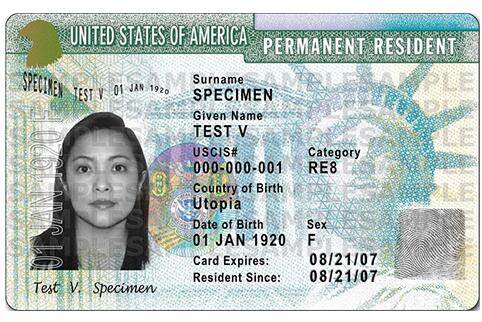
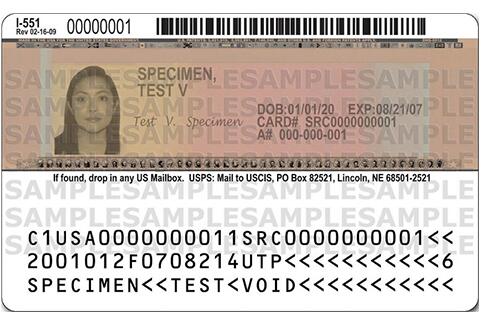
Older Form I-551, front and back
Another older version of the Form I-551 shows the DHS seal and contains a detailed hologram on the front of the card. Each card is personalized with an etching showing the bearer’s photo, name, fingerprint, date of birth, A-Number, and the card expiration date.
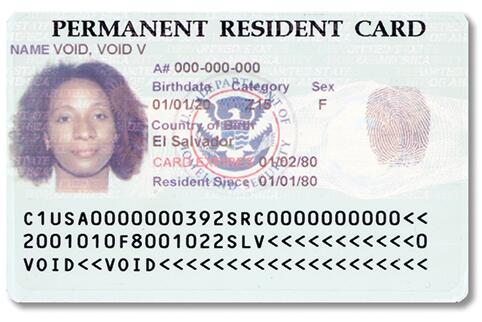
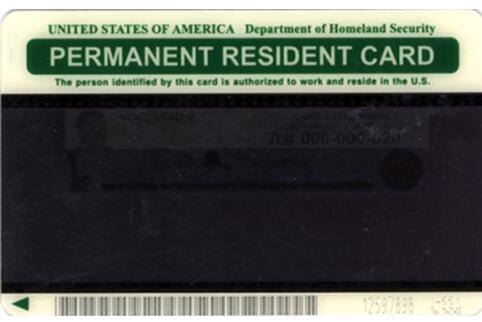
Some employees may also have older Resident Alien cards, issued by the U.S. Department of Justice, Immigration and Naturalization Service, which do not have expiration dates and are valid indefinitely. These cards are peach in color and contain the bearer’s fingerprint and photograph.
Form I-766, Employment Authorization Document
USCIS began issuing this design of the Employment Authorization Document (EAD) on January 30, 2023. Some cards issued after that date may still display the previous design because USCIS uses existing card stock until supplies are depleted. Both the current and previous EADs will remain valid until the expiration date shown on the card (unless otherwise noted, such as through an automatic extension of the validity period of the EAD as indicated on a Form I-797, Notice of Action, or in a Federal Register notice).
This version contains the bearer’s photo on the front and back, name, USCIS number, date of birth, and card expiration date along with updated artwork of the Statue of Liberty, holographic images on the front and back of the cards, a new layer-reveal feature with a partial window on the back photo box; and data fields displayed in different places than on previous versions.
Cards may contain one of the following notations below the expiration date:
- “Not Valid for Reentry to U.S.;”
- “Valid for Reentry to U.S.;” or
- “Serves as I-512 Parole.”
Current EAD, front and back
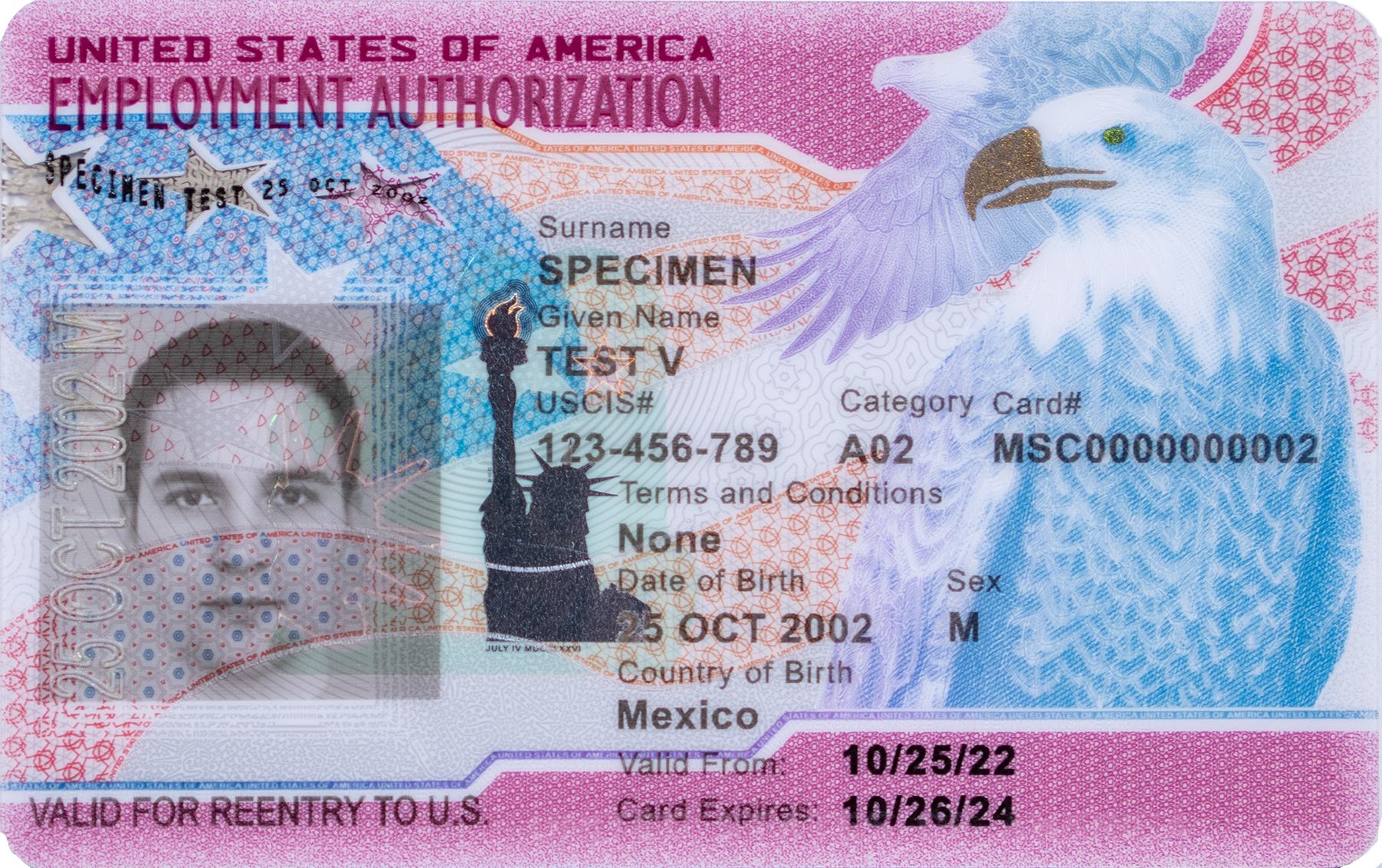
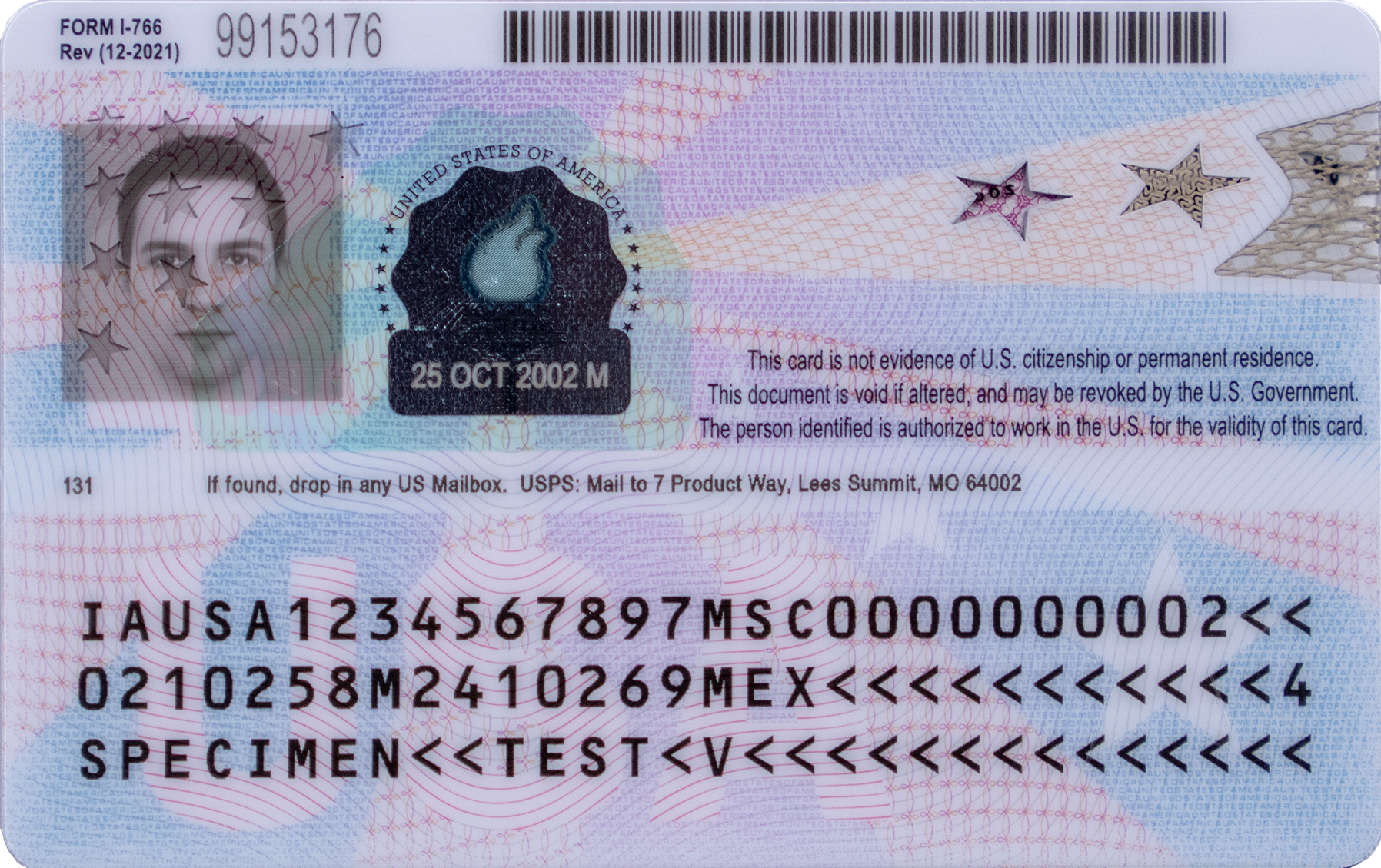
Previous EAD, front and back
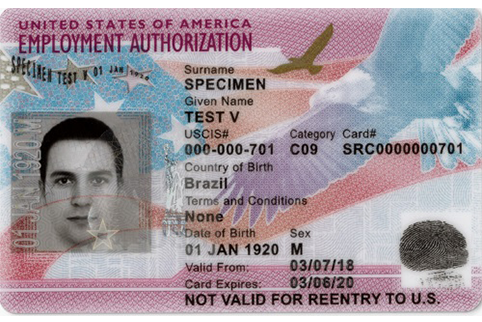
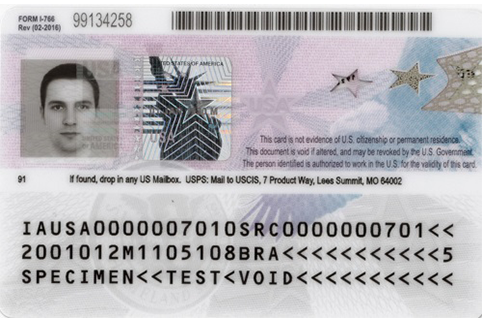
Foreign Passport with I-551 Stamp or MRIV
USCIS uses either an I-551 (ADIT) stamp or a temporary I-551 printed notation on a machine-readable immigrant visa (MRIV) to indicate temporary evidence of lawful permanent residence. Sometimes, if no foreign passport is available, USCIS will place the I-551 stamp on a Form I-94 and affix a photograph of the bearer to the form. This document is considered a receipt.
Unexpired Foreign Passport with I-551 Stamp
The temporary Form I-551 MRIV is evidence of permanent resident status for one year from the date of admission.
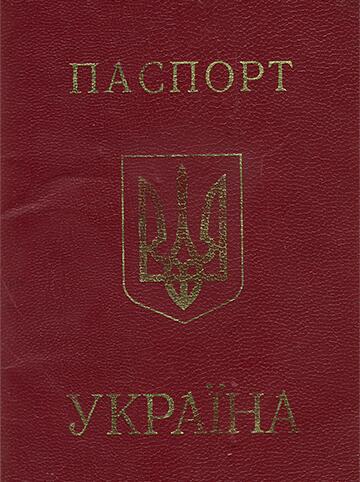
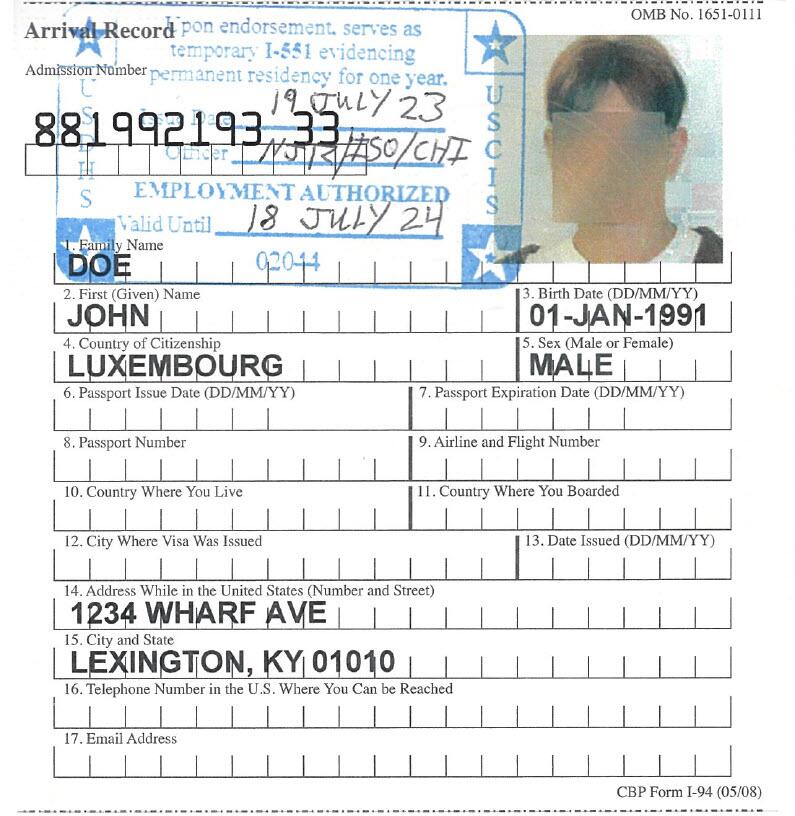
Temporary I-551 printed notation on a machine-readable immigrant visa (MRIV)
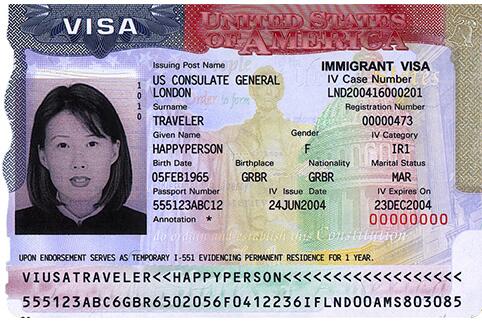
Form I-20 accompanied by Form I-94
For curricular practical training, F-1 nonimmigrant students with a Form I-94, Arrival/Departure Record, must also have Form I-20, Certificate of Eligibility for Nonimmigrant Students, endorsed with employment authorization by the designated school official. USCIS issues an EAD to all F-1 students who are authorized for optional practical training (OPT) and M-1 students authorized for practical training. See Section 7.4.2, F-1 and M-1 Nonimmigrant Students, for more information on Form I-20.
Form I-20 accompanied by Form I-94
.png)
See Form I-94 below.
Form DS-2019 accompanied by Form I-94
J-1 nonimmigrant exchange visitors must have a Form I-94, Arrival/Departure Record, accompanied by an unexpired Form DS-2019, Certificate of Eligibility for Exchange Visitor (J-1) Status, issued by the U.S. Department of State, that specifies the sponsor. J-1 exchange students also need a letter from their responsible officer authorizing their employment. See Section 7.4.1, Exchange Visitors (J-1), for more information on DS-2019.
DS-2019 accompanied by Form I-94
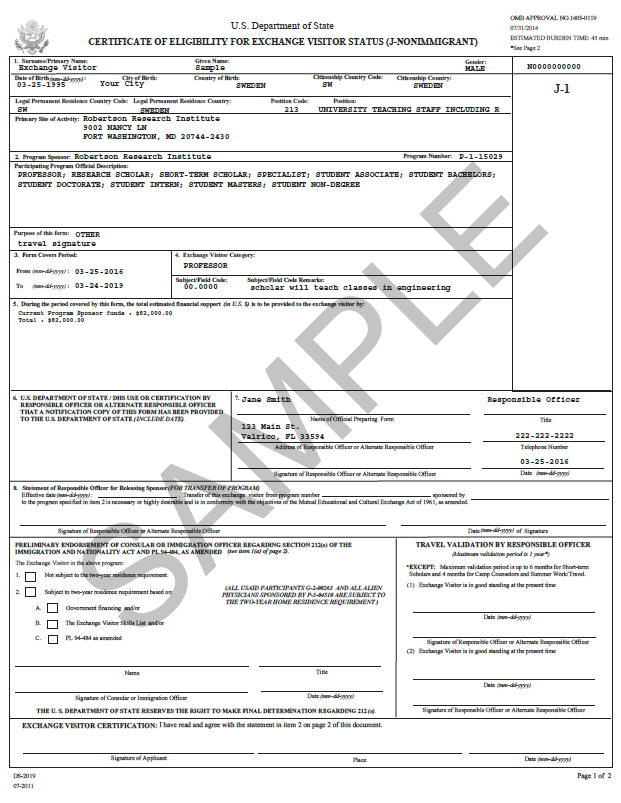
See Form I-94 below.
Form I-94, Arrival/Departure Record
CBP and USCIS issue Form I-94, Arrival/Departure Record, to nonimmigrants. This document indicates the bearer’s class of admission, date of entry, and date their immigration status expires. Generally, employees download it from cbp.gov. If an employee presents a paper Form I-94, it may show a stamped or handwritten date. They may present Form I-94 with documents that Form I-9 specifies are valid as a combination of documents, such as Form I-94 presented with a foreign passport, and Form DS-2019 or Form I-20.
Electronic Form I-94
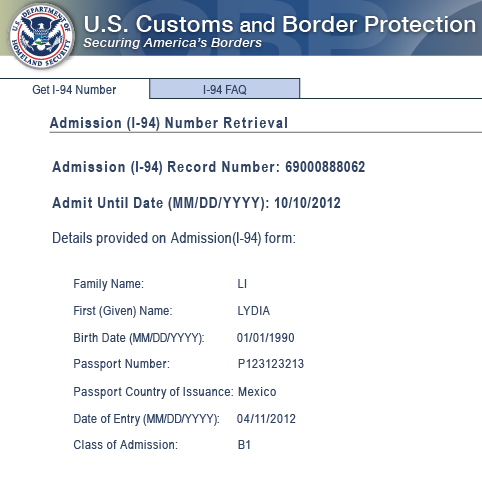
Form I-94, Arrival/Departure Record
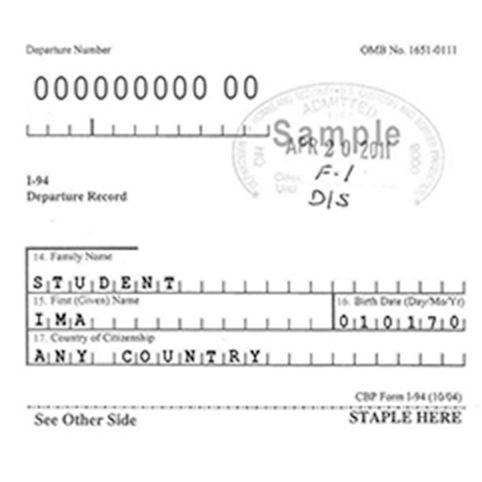
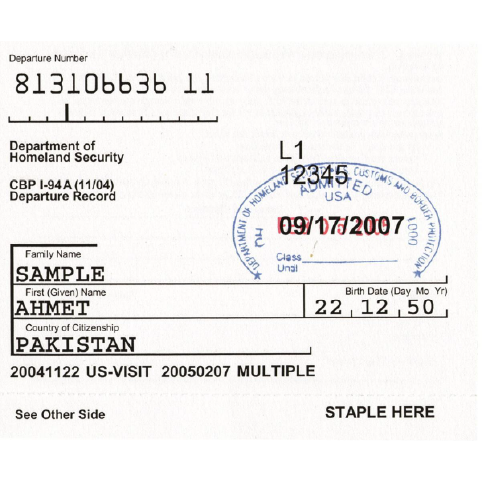
Passport of the Federated States of Micronesia and the Republic of the Marshall Islands
In 2003, Compacts of Free Association (CFA) between the United States and the Federated States of Micronesia (FSM) and Republic of the Marshall Islands (RMI) were amended to allow citizens of these countries to work in the United States without obtaining an EAD.
For Form I-9 purposes, citizens of these countries may present FSM or RMI passports accompanied by a Form I-94 indicating nonimmigrant admission under the CFA, which are acceptable documents under List A. The exact notation on Form I-94 may vary and is subject to change. The notation on Form I-94 typically states “CFA/FSM” for an FSM citizen and “CFA/MIS” for an RMI citizen.
Passport of the Federated States of Micronesia and the Republic of the Marshall Islands
